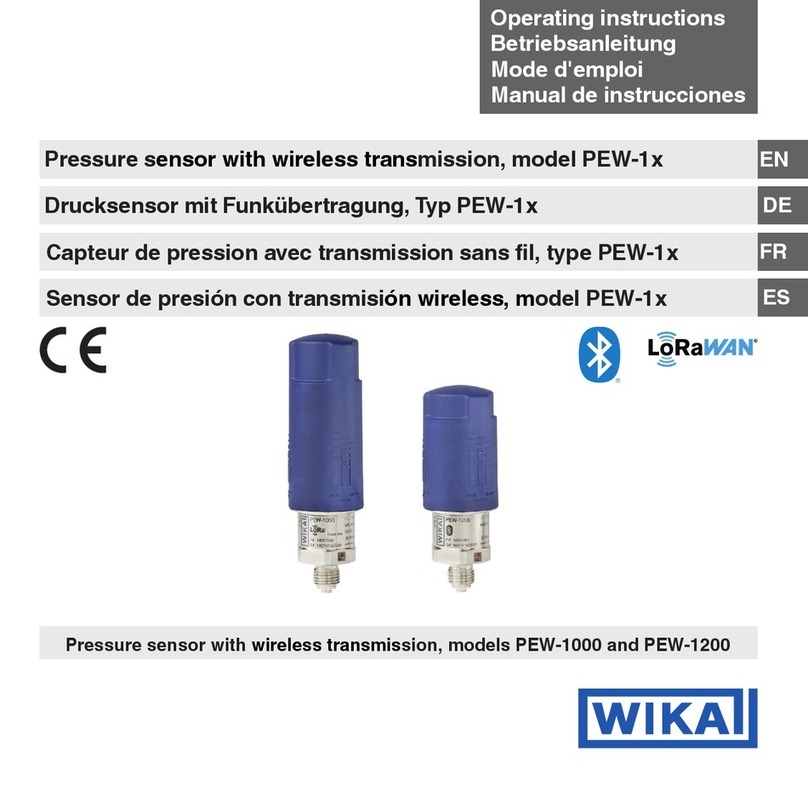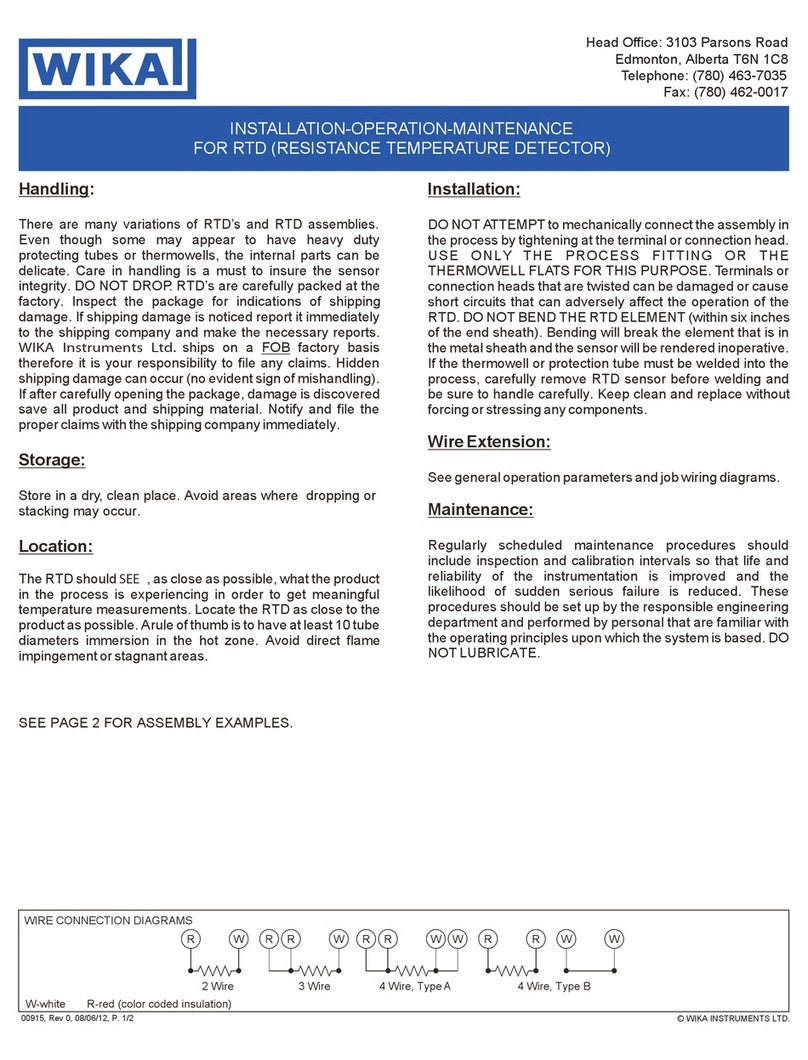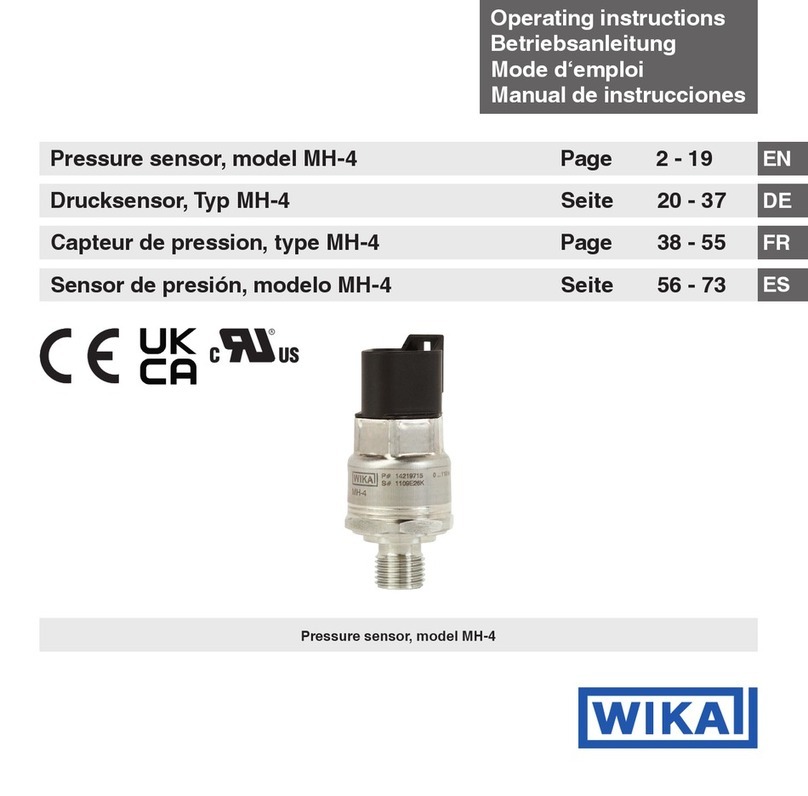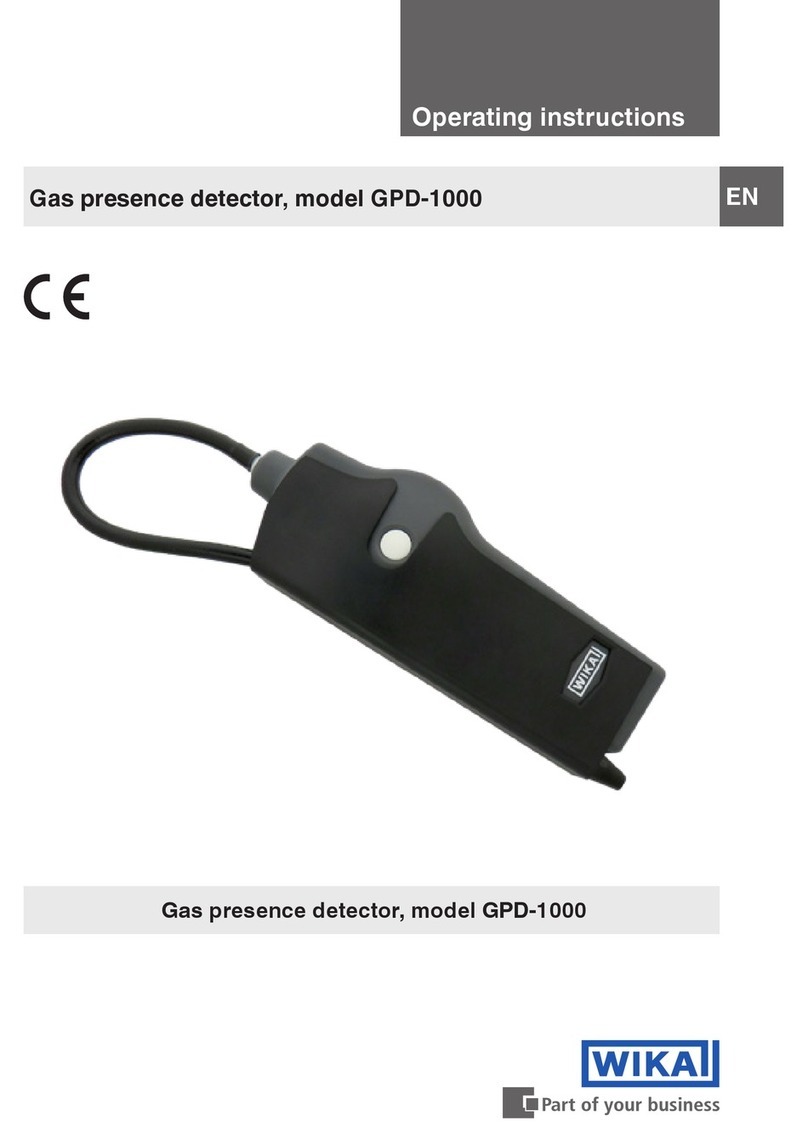
6Operating instructions, model F5802
EN
14528931.01 02/2024 EN/DE
2. Safety
Force transducer for measuring tension or compression forces, for example in cranes.
The product is designed for use both outside and inside buildings.
Load pins can measure forces in both directions.The measured force is output as an
electrical signal.These devices are designed for operation in industrial environment.
In other environments, e.g. residential or commerical, they may interfere with other
equipment. In this case, the operator may be required to implement appropriate
measures.
Only use the load pins in applications that are within the technical performance limits
(e.g. max. ambient temperature, material compatibility, etc.). For performance limits, see
chapter 9 “Specifications”.
The load pins of model F5802 are not approved for use in hazardous areas!
For this, see models F53C1 or F53C8.
These instruments have been designed and tested in accordance with the relevant
safety regulations for electronic measuring instruments. Any usage outside of this
is deemed to be improper.The perfect functioning and operational safety of the
transducers can only be guaranteed when complying with the instructions given in the
operating instructions. During its use, the legal and safety regulations (e.g.VDE 0100)
required for the particular application must additionally be observed.This also applies
accordingly when using accessories.Tension/compression force transducers are
RoHS-compliant in accordance with directive 2011/65/EU.
Faultless and safe operation of this transducer requires proper transport, professional
storage, installation and mounting as well as careful operation and corrective
maintenance.
The load pins are designed exclusively for the intended use which is described here and
may only be used accordingly. Claims of any kind due to improper use are excluded.
Handle electronic precision measuring instruments with the required care (protect from
humidity, impacts, strong magnetic fields, static electricity and extreme temperatures,
do not insert any objects into the instrument or its openings). Plugs and sockets must be
protected from contamination.
The technical specifications contained in these operating instructions must be
observed. Improper handling or operation of the instrument outside of its technical
specifications requires the instrument to be taken out of service immediately and
inspected by an authorised service engineer.
This instrument is intended for connection to an external PELV circuit that meets
the requirements of UL/IEC/EN 61010-1 Section 9.4 (limited-energy circuit).The
manufacturer shall not be liable for claims of any type based on operation contrary to
the intended use.The load pins are designed for indoor and outdoor use, at altitudes of
up to 2,500 m above sea level. The pollution degree in accordance with UL certification
is degree 4: “Electrical equipment for outdoor use”.































